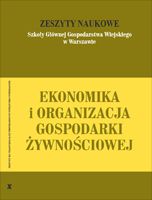Changes in Poverty Sphere in Germany
Main Article Content
Abstract
The paper focuses on poverty in the German families. Although there is enormous wealth in Germany, a significant proportion of German citizens live in poverty. The research was carried out using the international standard definition of relative poverty - which is an income of less than 50% of national average earnings. The study results reveal a rising tendency in the phenomenon after 1990 as a result of German unification. Poverty in the Eastern Lands is more widespread, the number of unemployed people is here relatively larger, households have bigger debts and lack of suitable accommodation is more common. In the country as a w hole, the structure of poverty has recently changed. At present, poverty is distributed between all types of households and figures show that it is growing amongst children and teenagers. Overall, the proportion of elder citizens living in poverty has been relatively lower since better welfare. In Germany, several programs have been implemented to reduce the social inequality and poverty. A broad range of policy fields are aimed at a fairer distribution of wealth and social benefits guaranteed by the Constitution.
Article Details
How to Cite
Zajączkowska, M., & Stańko, A. (2002). Changes in Poverty Sphere in Germany. Zeszyty Naukowe SGGW - Ekonomika I Organizacja Gospodarki Żywnościowej, (47), 37–52. https://doi.org/10.22630/EIOGZ.2002.47.20
References
Bieback K.J.; Milz H., (1995) Neue Arnut, Campus, Frankfurt/Main, New York.
Grundinformationen und Daten zur Sozialhilfe Berlin 1999.
Lebenslagen in Deutschland. Der erste Arnuts - und Reichtumsbericht der Bundesregierung, Berlin 2000.
Sozialabudget 2001, Bundesregierung, Berlin 2002.
Statistics
Downloads
Download data is not yet available.
Recommend Articles
Most read articles by the same author(s)
- Marcin Idzik, Aneta Stańko, Economics Conditions of Tendencies of Consumer’s Behavior on the Fast Moving Consumer Goods Market , Zeszyty Naukowe SGGW - Ekonomika i Organizacja Gospodarki Żywnościowej: No. 59 (2006)
- Maria Zajączkowska, Aneta Stańko, Sphere of Poverty in Poland in the Years 1994-2000 , Zeszyty Naukowe SGGW - Ekonomika i Organizacja Gospodarki Żywnościowej: No. 46 (2002)
- Agnieszka Borowska, Maria Zajączkowska, Changes in Food Consumption in the CEFTA Selected Countries , Zeszyty Naukowe SGGW - Ekonomika i Organizacja Gospodarki Żywnościowej: No. 38 (2000)
- Aneta Stańko, Entrepreneurship as a factor of development of rural areas , Zeszyty Naukowe SGGW - Ekonomika i Organizacja Gospodarki Żywnościowej: No. 79 (2009)
- Maria Zajączkowska, Agnieszka Borowska, Changes in Meat and Fish Consumption of Households in Poland in the Years 1988-1998 , Zeszyty Naukowe SGGW - Ekonomika i Organizacja Gospodarki Żywnościowej: No. 43 (2001)
- Aneta Stańko, Social Exclusion from Labour Market in European Union Member States , Zeszyty Naukowe SGGW - Ekonomika i Organizacja Gospodarki Żywnościowej: No. 72 (2008)
- Maria Zajączkowska, Supply and Consumption of Coffee in Poland in the Years 1950-1995 , Zeszyty Naukowe SGGW - Ekonomika i Organizacja Gospodarki Żywnościowej: No. 29 (1997)
- Aneta Stańko, The Level of Education Expenditure in the European Union Member States , Zeszyty Naukowe SGGW - Ekonomika i Organizacja Gospodarki Żywnościowej: No. 73 (2009)
- Aneta Stańko, The Poverty Level in New Member Countries of the European Union , Zeszyty Naukowe SGGW - Ekonomika i Organizacja Gospodarki Żywnościowej: No. 53 (2004)
- Maria Zajączkowska, Supply and Consumption of Tea in Poland in the Years 1950-1995 , Zeszyty Naukowe SGGW - Ekonomika i Organizacja Gospodarki Żywnościowej: No. 29 (1997)





